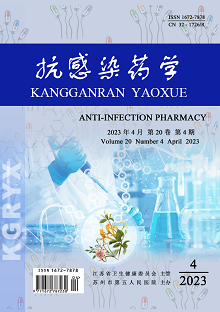HUANG Chang-liang, ZHOU Hai-ying, HUANG Chang-li
Objective: To analyze the correlation of procalcitonin and myocardial zymogram levels with inflammatory response in patients with severe pneumonia and their diagnostic values, so as to provide reference for the judgment and early prevention and treatment of severe pneumonia. Methods: A total of 187 patients with severe pneumonia admitted to the People's Hospital of Chaisang District from January 2020 to October 2021 were selected as the observation group, and healthy individuals (n=60) who underwent physical examination in the hospital and patients with common pneumonia (n=60) were selected as the health group and the normal group, and the correlation of the myocardial zymogram indicators such as creatine kinase (CK), glutamic-oxaloacetic transaminase (GOT), lactic dehydrogenase (LDH), etc. and procalcitonin (PCT) with severe pneumonia was analyzed, and a predictive model for severe pneumonia was constructed. Results: The levels of CK, LDH and GOT of patients in the health group were lower than those in the normal group and the observation group (P<0.05), and the levels of CK, LDH and GOT of patients in the normal group were lower than those in the observation group (P<0.05); the levels of PCT, WBC, and CRP of patients in the health group were lower than those in the normal group and the observation group (P<0.05), and the levels of PCT, WBC, and CRP of patients in the normal group were lower than those in the observation group (P<0.05). The correlation analysis showed that the levels of PCT, CK, LDH and GOT were positively correlated with the levels of WBC and CRP (P<0.05); the Logistic regression analysis showed that the levels of PCT, CK, LDH and GOT were independent risk factors for severe pneumonia (P<0.05); the ROC analysis showed that the sensitivities of PCT, CK, LDH, GOT, and PCT combined with myocardial zymogram indicators in predicting and diagnosis of severe pneumonia were 78.14%, 48.52%, 58.64%, 54.37%, and 92.87%, respectively, while their specificities were 86.92%, 79.24%, 84.73%, 85.22% and 91.45%, respectively. Conclusion: PCT, LDH, GOT, and CK are correlated with the inflammatory response in patients with severe pneumonia, and PCT combined with myocardial zymogram indicators has a good predictive value for the diagnosis of severe pneumonia.
